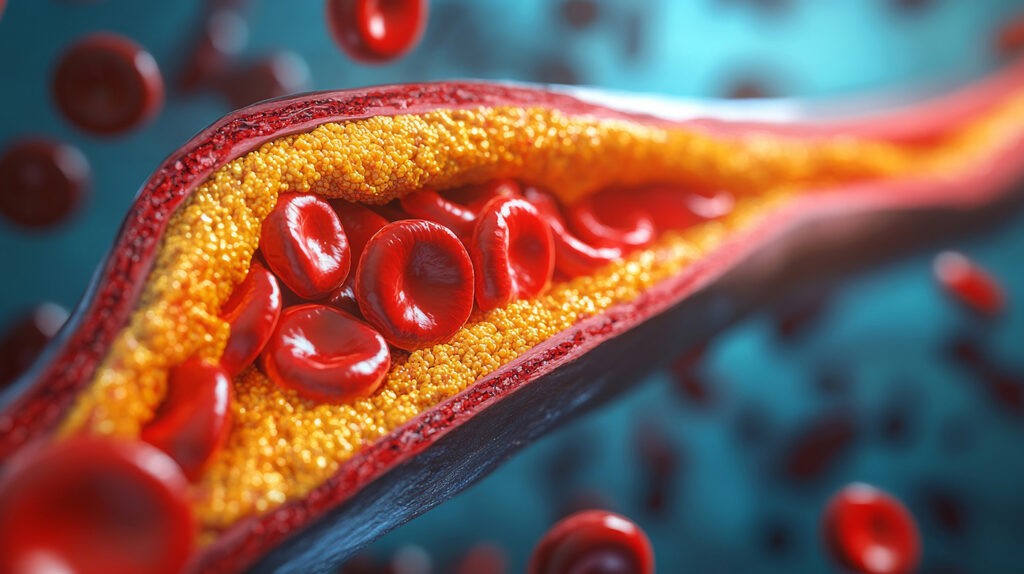
Sponsored content brought to you by
Introduction
Alternative model systems to study ischemia-reperfusion are needed to support a wide range of disease-related investigations in the life sciences. Ischemia and reperfusion are relevant to many disease states ranging from the impact of diabetes on the retina to stroke, cardiovascular disease and kidney dysfunction.1,2 However, the current approaches for these types of study are resource-intensive and require greater throughput. Here we examine how alternative in vitro methods that combine atmospheric control systems with the throughput offered by microplate readers can provide a boost to ischemia-reperfusion research.
Ischemia-reperfusion injury
Ischemia-reperfusion injuries occur when the blood supply returns to a part of the body after it has been cut off for some time. The initial lack of circulation or ischemia can damage the cells and tissues of different organs due to deprivation of oxygen and nutrients. In addition, the restoration of blood flow or reperfusion can cause further damage due to oxidative stress and inflammation. The events that take place during ischemia reperfusion contribute to the pathological changes linked to atherosclerosis, stroke, high blood pressure, and heart attacks. For the most appropriate clinical intervention, it is important to understand the physiology behind ischemia and reperfusion injury. In addition, studies are needed to identify and develop new drugs for unmet medical needs.
Microplate readers: fidelity for ischemia-reperfusion studies
What qualities do microplate readers equipped with atmospheric control systems offer for ischemia-reperfusion studies? At the top of the list is their ability to control the gas environment quickly and effectively under conditions of high fidelity with in vivo model systems. Many microplate readers can control CO2 and O2 levels in the range of 1–20%. In some cases, they can decrease O2 to 0.1%. The CLARIOstar® Plus with Atmospheric Control Unit (ACU) is the only microplate reader on the market that can rapidly reoxygenate the measurement chamber of the reader to simulate reperfusion by active venting. In addition, the CLARIOstar Plus can reach 0.1% O2 and can read at 100 datapoints per second. Here we highlight a few examples where this level of performance can enable physiological studies and drug development.
Mimicking the in vivo environment through atmospheric control
Researchers need to study the behavior of tissue-specific cells under conditions that closely mimic the in vivo environment. One way to study the intracellular oxygenation level of these cells in real time is to use the MitoXpress Intra probe (Agilent Technologies).
In Figure 1A, oxygenation levels of iPSC-derived cardiomyocytes were monitored through a hypoxia and reperfusion cycle. The CLARIOstar Plus with ACU facilitated precise atmospheric control from environmental O2 levels encountered in the laboratory to 1% oxygen in less than 10 minutes (grey curve). This was followed by a defined time at 1% oxygen followed by a rapid reperfusion (gas ramping) to 18% O2 (Figure 1A). Cells were treated with antimycin to block mitochondrial electron transport and inhibit cell respiration. The non-respiring cells reflect the conditions produced by the ACU. Untreated respiring cells (green curve) reflect the significantly reduced O2 concentrations. The extent of respiration by the cells markedly impacts the oxygenation concentrations at the cell monolayer. Cells that are actively respiring experience lower resting oxygen concentrations and a more sustained period of hypoxia.

and non-respiring cardiomyocytes.
Another distinct advantage of a microplate reader system is the ability to perform different assays in parallel (multiplexing). In this example, multiplexing on the CLARIOstar Plus permitted analysis of the mitochondrial membrane potential (MMP) through determination of the JC-1 aggregate/monomer ratio (JC-1 is a fluorescent membrane-permeant dye that exhibits a shift in emission color from green to red as the MMP becomes more polarized). In addition, generation of reactive oxygen species (ROS, Figure 1B) were detected using the dye dihydroethidium (DHE). Oxidative stress could be readily measured in parallel to the oxygenation levels within the cells.
Drug-related applications
Scalable, precise, and cost-effective ways like those offered by microplate readers and ACUs are not only needed to study cellular behavior but also to look for possible drug interventions.3
Hypoxia chambers have typically been used for ischemia reperfusion studies in the past but are limited in throughput and lack endpoint assays for measurement. These limitations have driven interest in model systems that rely heavily on the use of experimental animals. As demonstrated in the previous example, microplate readers enable kinetic assays to be performed in parallel under closely defined conditions of ischemia and reperfusion. Researchers can probe oxygen-induced stress, apoptotic cell death and other metabolic changes in detail. Significantly, due to the speed and fidelity of the gas ramping capabilities of the ACU, kinetic monitoring is enabled, which creates possibilities to look at how different drug interventions impact the consequences of ischemia reperfusion events in real time. These drug-related applications can be studied in cell experiments on a microplate reader. Small molecule drugs can be screened for protective effects against ischemia reperfusion injury including the study of specific outcomes on cell signaling events and processes like apoptotic cell death.
Ferroptosis is a type of cell death that is characterized by iron-dependent oxidative damage to membrane phospholipids. The extent of lipid peroxidation due to ferroptosis is impacted by ischemia reperfusion. Researchers therefore need ways to mimic the in vivo environment to study possible interventions for the diseases that arise from ferroptosis including neurological conditions.

In the study described here, lipid peroxide levels were quantified under conditions of normoxia and ischemia reperfusion at 37oC. Lipid peroxides were readily quantified using fluorescence measurements on a microplate reader in the presence of the lipophilic fluorescent probe Bodipy 581/591 C-11 (Figure 2).
Oxygen concentrations ranged from 1-18%. A significant increase in lipid peroxidation levels was observed after 2 hours of ischemia and 24 h of reperfusion in SK-N-DZ neuroblastoma cells. The administration of RSL3, a selective ferroptosis inducer and/or the ferroptosis inhibitor ferrostatin-1 during reperfusion reduced production of lipid peroxides. The CLARIOstar Plus with ACU readily enabled oxygen levels to be manipulated to replicate the conditions of ischemia reperfusion in these experiments using neuroblastoma cells.
In vitro assays that accurately mimic the in vivo environment were therefore a useful alternative to classic in vivo approaches for measuring increases in lipid peroxidation after ischemia reperfusion and studying the implications for disease.
Conclusion
The shift away from animal model systems depends on the availability of physiologically relevant cell models that can also translate into a drug discovery platform. Gas ramping capabilities that go hand-in-hand with the speed and accuracy offered by microplate readers offer distinct advantages to researchers, including a substantial increase in throughput. The CLARIOstar Plus with ACU allows relevant cell models to be cultured under in vivo conditions by mimicking not only hypoxic conditions but also reperfusion. The fast sampling rates and multiplex capabilities support the generation of reliable data for studies of the underlying mechanisms of disease and the development of new interventions.
References
- Antonetti DA, Lin CM, Shanmugam S, Hager H, Cao M, Liu X, Dreffs A, Habash A, Abcouwer SF. Diabetes Renders Photoreceptors Susceptible to Retinal Ischemia-Reperfusion Injury. Invest. Ophthalmol. Vis. Sci. 2024 Nov 4;65(13):46. doi: 10.1167/iovs.65.13.46.
- Al-Othman R, Al-Jarallah A, Babiker F. High-density lipoprotein protects normotensive and hypertensive rats against ischemia-reperfusion injury through differential regulation of mTORC1 and mTORC2 signaling. Front Pharmacol. 2024 Nov 14;15:1398630. doi: 10.3389/fphar.2024.1398630.
- Ebert AD, Svendsen CN. Human stem cells and drug screening: opportunities and challenges. Nat. Rev. Drug Discov. 2010 May;9(5):367-72. doi: 10.1038/nrd3000.
 If you are interested in further details about microplate-based evaluation of ischemia-reperfusion studies, please contact us at [email protected].
If you are interested in further details about microplate-based evaluation of ischemia-reperfusion studies, please contact us at [email protected].


